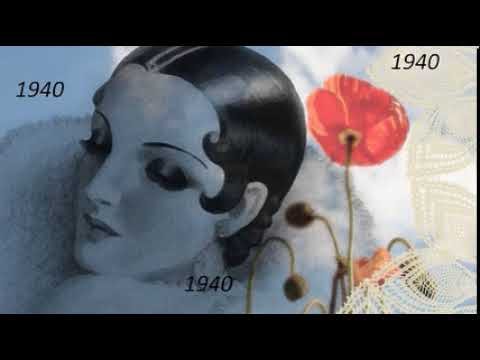On occasion I will simply draw your attention to some of my favorite moments in recorded jazz. Trumpeter Roy Eldridge is probably most identified with fast, exciting showpieces such as his several versions of “After You’ve Gone.” And those are indeed amazing. But he also had daring things to say on slower pieces, what jazz people call “ballads.” (In folk music, a ballad is a long song that tells a tale, but in jazz, any slow song is a “ballad.”) “Rockin’ Chair” is his best-known ballad feature.
But a less celebrated, astonishingly brilliant Roy Eldridge solo appears in this recording of “I Surrender Dear” from May 25, 1940. The other personnel are topnotch too: Coleman Hawkins on tenor sax (soloing before and after Roy), Benny Carter comping chords on piano (on other tracks from this date he plays his alto sax), Bernard Addison on guitar, John Kirby on bass, and Sid Catlett on drums (just brushes on this tune, audible at the very beginning). This is the “master” take—that is, the one that was released on the original 78rpm. (Additional takes are now available.) Let’s listen first and talk a little about it afterward—Roy starts at 1:28:
Do you agree with me? What an unexpected approach to a so-called “romantic” song!
Let’s listen again, with these notes in front of us. (If it’s opening in another tab, you might have to have both windows open.) Between Hawk’s ending and Roy’s entrance at 1:28, the feel of the rhythm section changes slightly, tightens up it seems. Roy starts by placing his notes very deliberately. Then at 1:42, winding up the first A section, he bursts into double-time, which he continues into the second A section. At 1:51 he creates a kind of avant-garde “shout”—transcribers, try notating that!
His phrases answer each other brilliantly. For example, one long phrase ends with a descending idea at 2:00. He follows that with a similar but longer descending phrase. To end the second A section, he slows down the pace a bit, and plays in his lower register. He begins the bridge at 2:08 with a surprising low, growling line, and follows that with two perfectly matched phrases. The first, at 2:14, ends at 2:17 with a quarter-tone that sounds to me absolutely deliberate—and moving. The answering phrase, ending at 2:19, is similarly chromatic and low in register. So it is perfectly effective to follow that with a big open, lyrical line at 2:20, that moves right into some more double-time, bringing us into the last A section.
That last A section begins at 2:30 with an intense, growling descending line which brings out the D-minor feel of the accompaniment. (Each A section emphasizes D-minot before resolving to C major.) From 2:42 to the end of his chorus, he opens up again with a big lyrical sound and vibrato. The entire chorus blows my mind, with its tremendous variety and richness and his atypical approach to the ballad style.
I’m not wanting to ignore Hawkins here. He is brilliant, as always. Check out his fast runs, played very freely over the beat between about 3:00 and 3:20, and his high scream at 4:01. (I was lucky enough to see him at the Village Vanguard in 1966. I was deep into Hawk before I ever heard anything by Pres.)
Now, about that group name, The Chocolate Dandies: It came from an all-Black musical of that name that ran on Broadway in 1924. Written by Eubie Blake and Noble Sissle, it was a follow-up to their hit musical of 1921, Shuffle Along. (Both musicals had additional co-writers for the script, aka the “book.”) The name was used for eight jazz recording groups from 1928 to 1946, five of which involved Benny Carter, which makes me think he had a liking for that title. I suspect that he used it in an ironic way, especially because the 1933 session was an integrated date, involving white musicians as well as Black ones.



My dear friend Benny Carter recorded a wonderful trumpet version of I Surrender Dear with his big band. When we both went to a Jack Sheldon Big Band gig at the old Catalina’s in Los Angeles, Jack fell to his knees, kissed Benny’s shoes and exclaimed ‘I Surrender Dear, Benny Carter, greatest solo performance ever!’ Benny didn’t know where to hide himself!
I do wonder if the particular way in which Roy Eldridge ‘doubles up’ may have influenced how Charlie Parker would do so on slow numbers. Parker’s mentor Buster Smith was known for doubling up, so he almost certainly influenced Bird in that regard. But I don’ think one can listen to early recordings of Bird (the Wichita broadcasts with McShann, the tracks with Effergee Ware) and not hear an affinity between Bird’s doubling up and Eldridge’s on this track (1:43-1:51, 2:24-2:30). And we know that Parker was no stranger to Roy’s style, as he quotes Roy’s transition to the bridge of Body & Soul (Commodore 1502 B) in his own Body & Soul solo with McShann! Granted, Roy’s solo on that 1938 recording with Chu Berry has the rhythm section playing double time as well, hence he isn’t doubling up in that particular instance.
Ultimately, Bird in his maturity had his own thing; he does not sound like Eldridge on slow numbers. But as a younger musician he does, at least a little to my ears, leading me to wonder if Eldridge’s example was important to a young Parker as he formulated his own approach to playing ballads.
Perhaps I’m leaning a bit towards speculation, but I nonetheless find it interesting to think about how Roy Eldridge might’ve influenced musicians other than trumpet players. Thanks for a great post, Lewis!